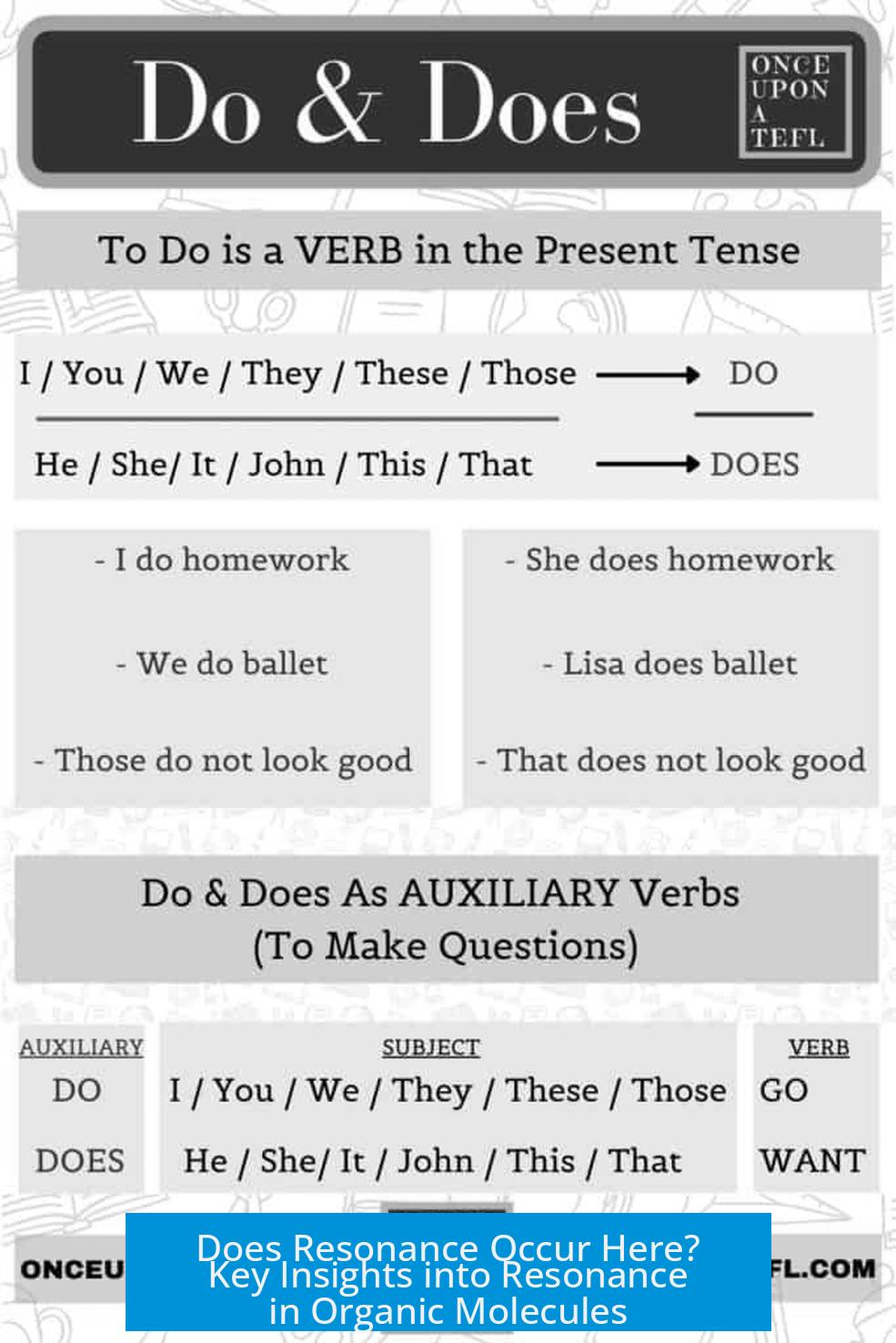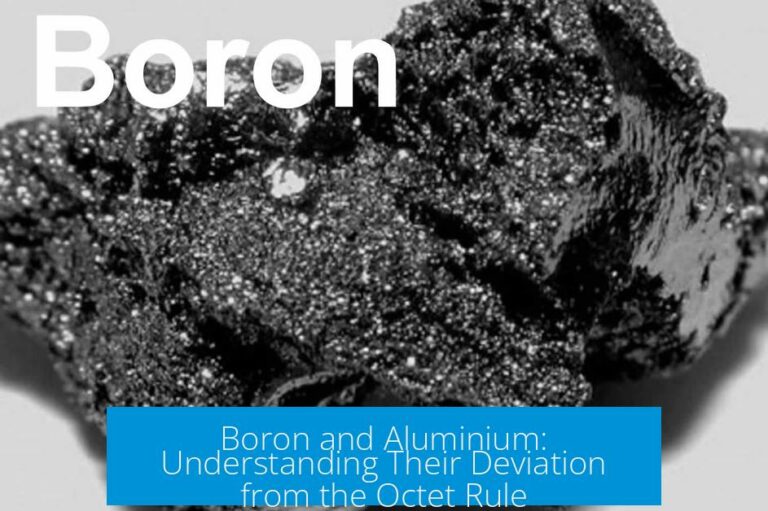Does Resonance Occur Here?
Resonance does not occur in a single isolated carbon-carbon double bond without adjacent conjugated systems. The pi electrons in such an alkene are localized between two sp2 hybridized carbons, restricting electron delocalization and thus resonance. Resonance demands overlapping p-orbitals across multiple contiguous atoms, which cannot happen with only one double bond separated by sp3 carbons or without alternate single and double bonds.
Understanding Resonance in Organic Molecules
What Is Resonance?
Resonance describes how electrons in π (pi) bonds or lone pairs can delocalize over adjacent atoms with overlapping p-orbitals. The concept invokes multiple Lewis structures that individually don’t fully represent the true electronic state but collectively depict a more accurate hybrid.
In molecules with resonance, electrons don’t remain fixed in one position but instead exhibit a quantum mechanical probability distribution over multiple atoms or bonds.
Key Requirements for Resonance
- Conjugation: Alternating single and double bonds (or lone pairs adjacent to pi bonds) create a pathway for electron delocalization.
- Sp2 Hybridization: Carbon atoms involved in resonance must be sp2 hybridized, providing parallel p-orbitals for overlap.
- Overlapping P-Orbitals: Electron delocalization requires continuous overlap; interruption by sp3 carbons stops resonance.
Why Resonance Does Not Occur in a Single Double Bond
Pi Electrons and Their Localized Nature
In a typical alkene with a single carbon-carbon double bond, the pi electrons are localized between two sp2 carbons only. There is no adjacent π system for electrons to delocalize onto.
Electron movement is restricted because the pi bond involves a specific overlap of two p-orbitals on the carbons forming the double bond. No other nearby p-orbitals participate, so resonance is absent.
Hybridization Constraints
Sp3 hybridized carbons occupy tetrahedral geometry with no unhybridized p-orbitals to facilitate electron delocalization. Resonance requires at least two contiguous sp2 carbons or heteroatoms with lone pairs available.
If a double bond is separated by an sp3 hybridized carbon, the conjugation pathway is broken. Hence, resonance cannot occur through or past sp3 carbons.
Limits on the Movement of Pi Electrons
The electrons in the double bond cannot simply shift positions arbitrarily without altering bond counts and violating octet rules.
Any attempt to move the double bond’s pi electrons within the same isolated double bond would create extreme charge imbalances or unstable carbocation-carbanion pairs that generally do not represent valid resonance forms.
Cases Where Resonance Might Seem to Occur: Carbocation and Carbanion Interactions
Some argue that resonance-like structures arise when considering transient species such as carbocations and carbanions adjacent to a double bond.
For example, if the pi electrons partially shift towards one carbon, creating a carbocation on one end and a carbanion on the other, this could indicate electron delocalization resembling resonance.
However, such structures are usually highly unstable and do not contribute significantly to the resonance hybrid. This limits their validity as resonance contributors in standard resonance theory.
Contrast with True Resonance Systems
| Feature | Single Alkene Double Bond | Conjugated Diene or Aromatic Ring |
|---|---|---|
| Number of Adjacent Pi Bonds | One | Two or more alternated |
| Continuous π Orbital Overlap | No | Yes |
| Electron Delocalization | Absent | Present |
| Resonance Hybrid Formed | No | Yes |
| Overall Stability from Delocalization | Minimal | Enhanced |
Theoretical Insights into Resonance
Resonance is not just electron shifting; it describes the true molecular orbital as a quantum superposition of multiple resonance structures.
Each resonance contributor is an idealized electronic state. The actual molecule exists as a weighted average, increasing stability through delocalization.
This quantum view explains why molecular properties like bond lengths or reactivity do not fit single Lewis structures but align with resonance hybrids.
Resonance and Reaction Mechanisms in Alkenes
The pi electrons in an alkene double bond are more reactive due to their localized but higher energy state compared to sigma bonds.
While resonance does not occur in isolated double bonds, the pi bond’s nature allows it to react with electrophiles readily.
In electrophilic addition reactions (e.g., hydrohalogenation, hydration), the pi electrons interact with the electrophile, forming carbocations that may rearrange to more stable intermediates.
This reactivity is not resonance but rather the electron-rich character of the double bond usable in chemical transformations.
Common Misunderstandings and Clarifications
- Resonance is not the same as nuclear magnetic resonance (NMR). NMR involves nuclear spins, not electron delocalization through bonds.
- Simply removing a hydrogen and adding an electron dot on an adjacent carbon does not guarantee valid resonance unless p-orbitals overlap and electrons delocalize.
- Resonance structures must be valid Lewis structures obeying basic stability and electron count rules.
Summary of Resonance Occurrence in Single Double Bonds
- Resonance requires conjugation and continuous overlap of p-orbitals.
- A single double bond without adjacent sp2 carbons or heteroatoms cannot delocalize electrons resonance-wise.
- Sp3 hybridized carbons interrupt conjugation, preventing resonance.
- Transient carbocation and carbanion structures may hint at electron movement but are usually unstable and poor resonance contributors.
- Resonance describes a quantum superposition, not simple electron shifting or bond relocation.
- Pi electrons in alkenes are reactive but localized; their behavior supports addition reactions, not resonance.
- Detailed molecular structure assessment is critical to determine if resonance is possible.
Does resonance occur in a simple alkene with only one double bond?
No. A single double bond between two sp2 carbons without conjugation does not show true resonance because the pi electrons are localized and cannot move to other parts.
Can resonance exist if a carbocation and a carbanion form near a double bond?
Such structures suggest possible resonance but are often unstable. These charge-separated forms are not typical resonance contributors due to their high energy and instability.
Why can’t resonance occur through sp3 hybridized carbons?
Sp3 carbons lack p-orbitals needed for electron delocalization. Resonance requires overlap of p-orbitals, which is only present in sp2 or sp hybridized atoms.
Is resonance just about electrons moving between bonds?
No. Resonance is better described as a quantum superposition of multiple electron arrangements. The actual molecule is a hybrid of these resonance forms.
How does resonance relate to the reactivity of alkenes?
The pi electrons in alkenes can delocalize or shift during reactions, which explains addition reactions like hydrohalogenation. This electron character affects how alkenes react chemically.





Leave a Comment